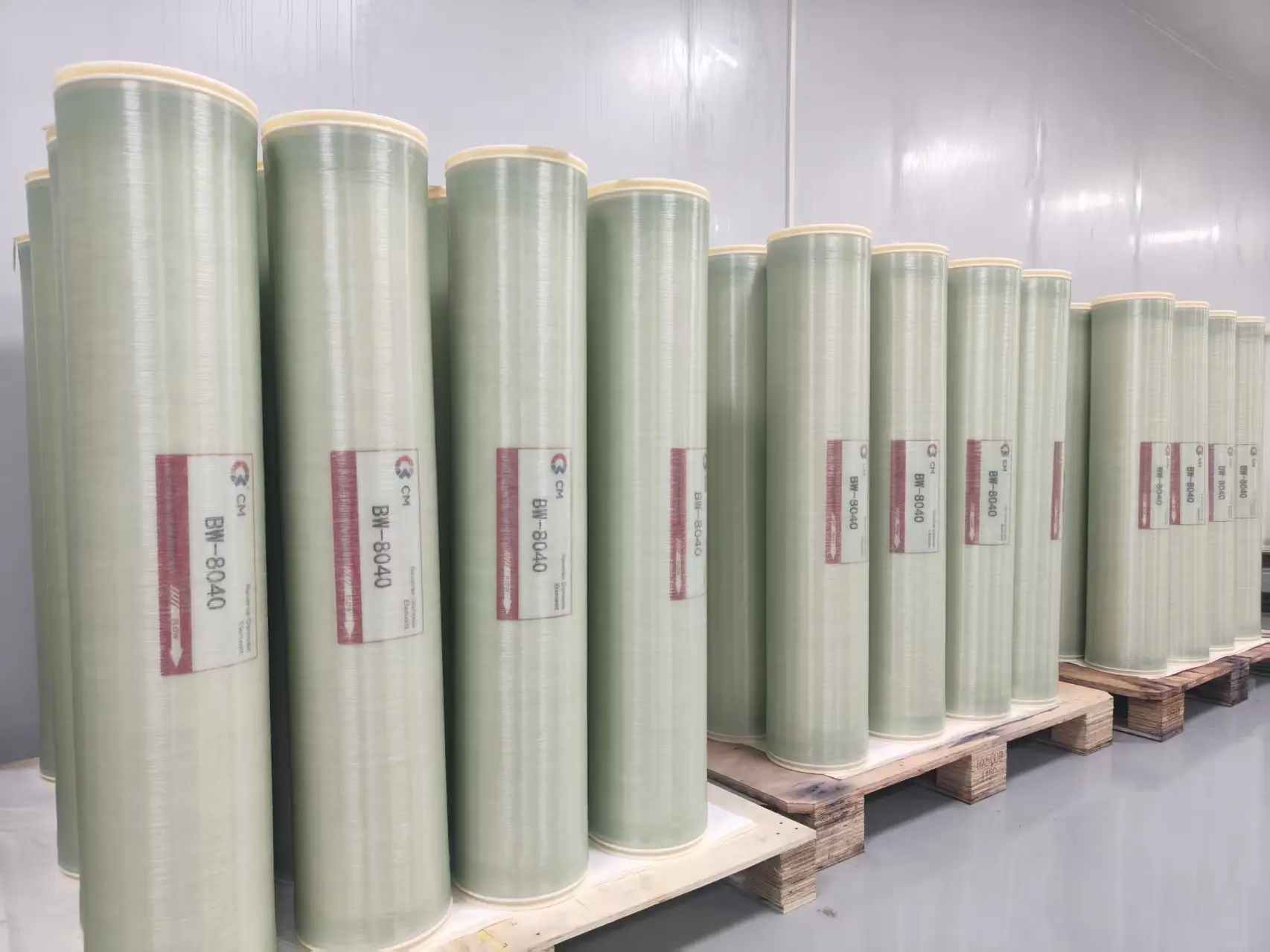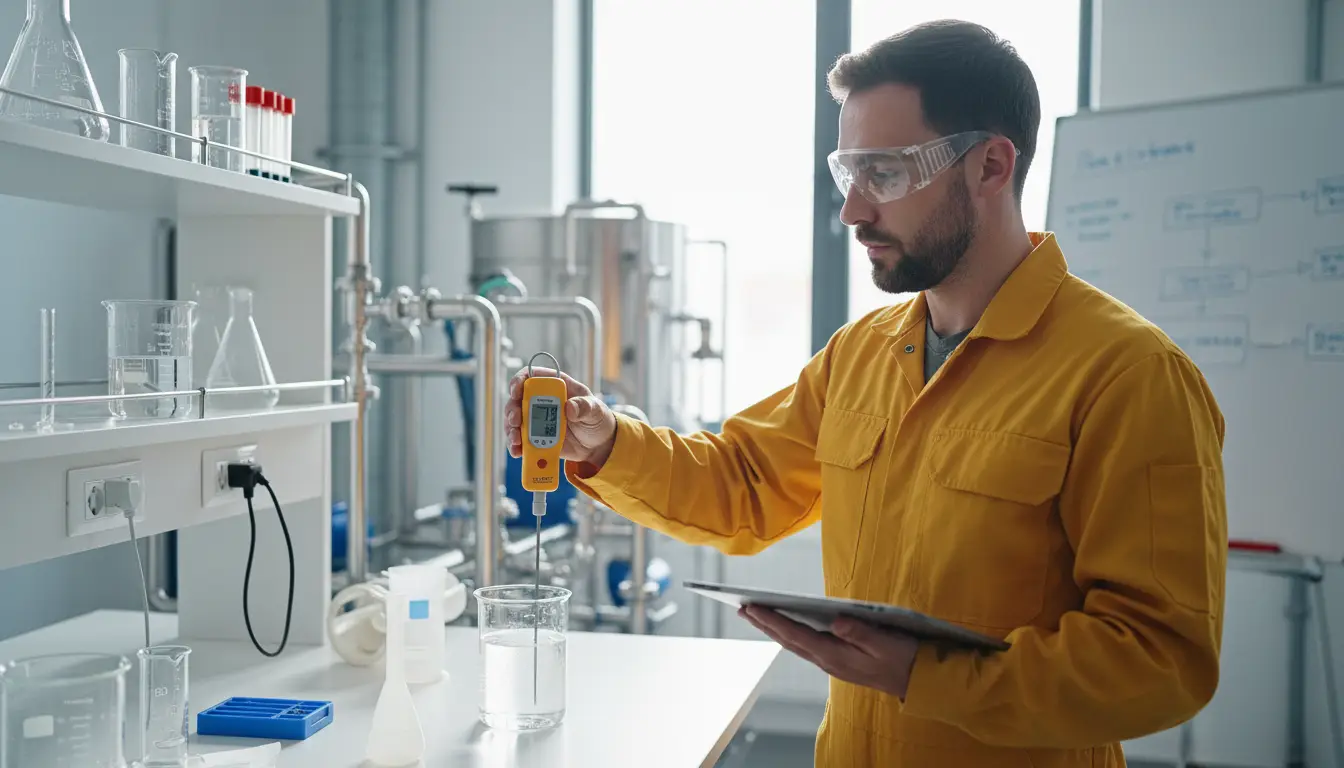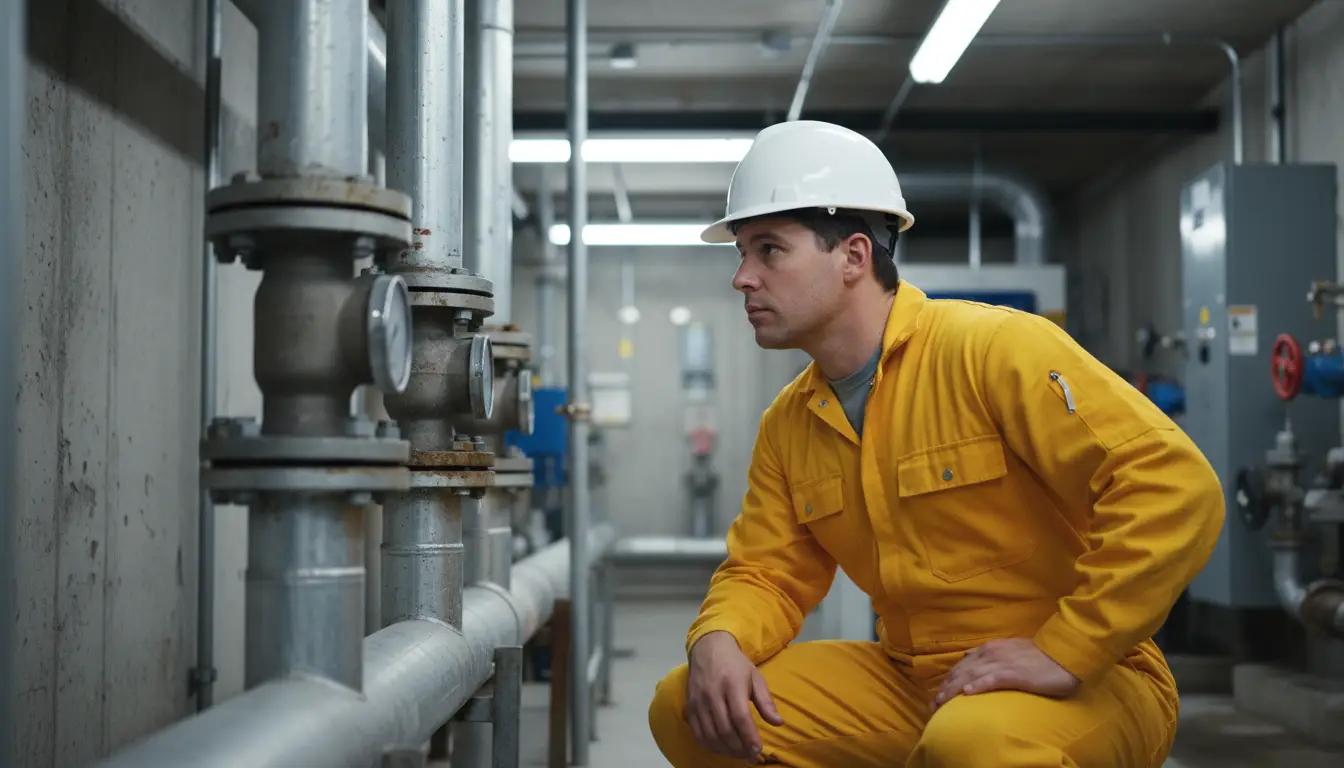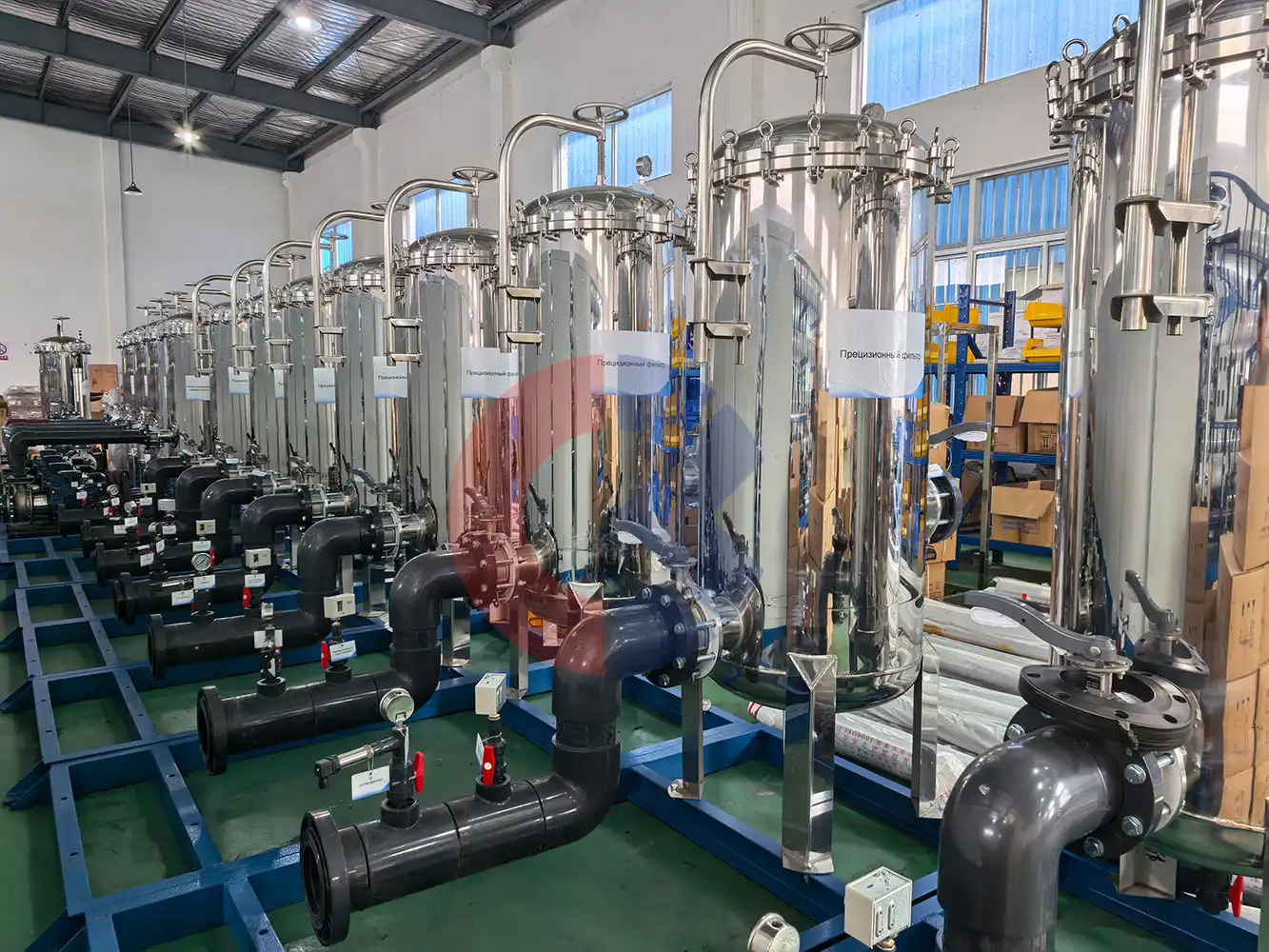What Are the Key Factors Affecting RO Membrane Performance?

Poor RO membrane performance destroys water quality and increases costs. Your production depends on consistent filtration. Understanding performance factors prevents expensive failures and downtime.
RO membrane performance depends on feed water quality, operating pressure, temperature, pH levels, fouling control, and system design. Proper management of these factors ensures optimal rejection rates and membrane lifespan.

I discovered this the hard way when our membrane system started producing inconsistent water quality. Production yields dropped 30% before we identified the root causes. After fixing the key performance factors, our system ran flawlessly for three years. Let me share what controls membrane performance.
How Does Feed Water Quality Impact Membrane Performance?
Feed water quality determines everything about membrane operation. Poor water quality kills performance and shortens membrane life. You cannot fix downstream what goes wrong upstream. Quality starts with understanding your input water.
High TDS, extreme pH, temperature variations, and specific contaminants directly reduce membrane efficiency. Dissolved salts increase osmotic pressure while contaminants cause fouling that blocks water passage through membrane pores.
Understanding Total Dissolved Solids Impact
TDS levels control how hard membranes work. Higher salt concentrations create more osmotic pressure. The membrane fights against this pressure to separate water from salts. Performance drops as TDS increases.
Low TDS water below 500 ppm gives excellent performance. Membranes easily achieve 98-99% rejection rates. Operating pressure stays reasonable. Membrane life extends to 4-5 years with proper care.
Medium TDS water from 500-1500 ppm requires higher pressure. Rejection rates stay good at 96-98%. Operating costs increase due to higher energy consumption. Membrane life reduces to 2-3 years typically.
High TDS water above 1500 ppm stresses membranes significantly. Rejection rates may drop to 94-96%. Very high pressure is needed for adequate flow. Membrane life often drops below 2 years.
I learned this lesson with a client's well water system. TDS measured 2200 ppm with high calcium levels. Standard residential membranes failed within 6 months. We switched to high-rejection commercial membranes and added better pretreatment. Performance improved dramatically.
Temperature affects performance in complex ways. Higher temperature increases water flux through membranes. But it also increases salt passage. The net effect depends on your specific conditions.
pH extremes damage membrane materials. TFC membranes work best between pH 6-8. Acidic conditions below pH 4 cause hydrolysis. Alkaline conditions above pH 11 also degrade membrane polymers.
What Role Does Operating Pressure Play in Performance?
Operating pressure drives the separation process. Too little pressure gives poor performance. Too much pressure wastes energy and damages membranes. Finding the optimal pressure range maximizes performance and membrane life.
Insufficient pressure reduces water flux and salt rejection efficiency. Excessive pressure increases energy costs and accelerates membrane degradation. Optimal pressure balances performance, energy consumption, and membrane longevity for best results.
Finding the Pressure Sweet Spot
Most RO membranes operate best between 150-250 psi. This range provides good water flux with acceptable salt rejection. Pressure below 100 psi gives poor performance. Pressure above 400 psi damages most residential membranes.
Low pressure operation saves energy but compromises performance. Water flux drops significantly below design pressure. Salt rejection also decreases. The membrane cannot overcome osmotic pressure effectively.
High pressure operation increases water production but creates problems. Energy costs rise dramatically. Membrane compaction occurs under excessive pressure. The membrane structure changes permanently.
Optimal pressure depends on feed water TDS and temperature. High TDS water needs higher pressure to overcome osmotic pressure. Cold water requires more pressure than warm water for the same flux rate.
I always start new systems at minimum recommended pressure. Then gradually increase pressure while monitoring performance. The optimal point gives maximum water production without excessive energy consumption. This approach extends membrane life by 30-40%.
Pressure drop across membranes indicates fouling severity. Clean membranes have minimal pressure drop. Fouled membranes create high resistance. Monitor pressure differential to trigger cleaning cycles.
Recovery rate affects pressure requirements. Higher recovery concentrates feed water and increases osmotic pressure. The membrane works harder as recovery increases. Most systems operate at 75% recovery optimally.
How Do Temperature Variations Affect Membrane Function?
Temperature changes everything about membrane performance. Higher temperatures increase water flux but reduce salt rejection. Lower temperatures do the opposite. Managing temperature optimizes both productivity and water quality.
Every 1°C temperature increase raises membrane flux by 2-3% while slightly increasing salt passage. Cold water operation reduces productivity but improves rejection rates. Optimal temperature balances these competing effects.

Temperature's Complex Effects on Performance
Membrane flux increases exponentially with temperature. Water molecules move faster at higher temperatures. They pass through membrane pores more easily. Flux can double between 40°F and 80°F.
Salt passage also increases with temperature. The membrane becomes slightly more permeable to dissolved salts. This effect is smaller than the flux increase but still significant. Salt rejection may drop 0.5-1% per 10°F increase.
Cold water operation creates different challenges. Low temperatures reduce flux dramatically. The system may not meet design flow rates. Energy consumption increases to maintain adequate pressure.
Hot water accelerates membrane degradation. Chemical reactions proceed faster at higher temperatures. Membrane polymers break down more quickly. Operating above 113°F (45°C) significantly reduces membrane life.
I designed a system for a client with wide temperature variations. Summer feed water reached 85°F while winter water dropped to 45°F. We installed temperature compensation controls to maintain consistent performance year-round. This prevented seasonal water quality problems.
Thermal shock damages membranes permanently. Rapid temperature changes cause membrane expansion and contraction. Repeated thermal cycling creates stress fractures. Always change temperature gradually during system operation.
Biological growth accelerates at higher temperatures. Bacteria multiply faster in warm water. This increases biofouling potential. Systems operating above 77°F need more frequent cleaning and biocide treatment.
What Are the Main Types of Membrane Fouling?
Fouling is the biggest threat to membrane performance. Different types of fouling require different solutions. Understanding fouling mechanisms helps prevent performance decline and extends membrane life.
The four main fouling types are particulate fouling, scaling, organic fouling, and biofouling. Each type has distinct characteristics and requires specific prevention or treatment strategies for optimal membrane performance.
Identifying and Preventing Different Fouling Types
Particulate fouling blocks membrane pores with suspended solids. Sand, silt, and other particles accumulate on the membrane surface. This type of fouling develops quickly with poor pretreatment.
Scaling occurs when dissolved minerals precipitate on membranes. Calcium carbonate, calcium sulfate, and silica are common scale formers. High recovery rates increase scaling potential by concentrating these minerals.
Organic fouling involves natural organic matter and synthetic compounds. Humic acids, proteins, and industrial chemicals create sticky layers on membranes. These layers trap other contaminants and accelerate fouling.
Biofouling results from bacterial growth on membrane surfaces. Bacteria form biofilms that protect them from disinfection. These biofilms create high resistance to water flow and harbor other microorganisms.
I encountered severe biofouling at a food processing plant. The RO system served both production and cleaning needs. Organic contamination from food residues fed bacterial growth. We solved this with improved pretreatment and regular biocide dosing.
Prevention works better than treatment for all fouling types. Effective pretreatment removes particles before they reach membranes. Chemical dosing prevents scale formation. Disinfection controls biological growth.
Regular cleaning removes accumulated fouling before permanent damage occurs. Use appropriate chemicals for each fouling type. Acidic cleaners remove scale. Alkaline cleaners handle organics and biofilms. Oxidizing cleaners kill bacteria.
How Does System Design Impact Performance?
System design determines how well membranes perform under real conditions. Poor design wastes membrane potential and creates operational problems. Good design optimizes performance while minimizing maintenance requirements.
Proper staging, flow distribution, pressure management, and monitoring systems maximize membrane efficiency. Poor design creates dead zones, uneven loading, and maintenance difficulties that reduce overall system performance.
Key Design Factors for Optimal Performance
Membrane staging affects both performance and economics. Single-stage systems are simple but waste membranes. Multi-stage systems optimize each membrane's contribution. Two-stage systems work well for most applications.
Flow distribution ensures even loading across all membrane elements. Poor distribution overloads some membranes while underutilizing others. This creates performance variations and premature failure of overloaded elements.
Pressure vessel design affects maintenance access and performance monitoring. Horizontal vessels are easier to service. Vertical vessels save floor space. Choose based on your facility constraints and maintenance capabilities.
Recovery rate optimization balances water production with concentrate disposal. Higher recovery produces more water but increases fouling potential. Lower recovery wastes water but reduces membrane stress.
I designed a system with staged recovery optimization. The first stage operated at 50% recovery. The second stage treated first-stage concentrate at 75% recovery. Overall system recovery reached 87% with excellent water quality.
Monitoring systems provide early warning of performance problems. Pressure, flow, and conductivity sensors track key parameters. Data logging reveals trends that predict maintenance needs. Automated systems respond faster than manual monitoring.
Cleaning systems must match fouling characteristics. In-place cleaning systems save labor but require careful design. Portable cleaning skids offer flexibility but increase maintenance complexity. Choose based on your operational preferences.
What Chemicals Affect Membrane Performance?
Chemical compatibility determines which membranes work in specific applications. Some chemicals improve performance while others cause permanent damage. Understanding chemical effects prevents expensive mistakes and optimizes treatment results.
Chlorine destroys polyamide membranes instantly while antiscalants prevent mineral fouling. pH adjustment chemicals affect membrane stability and cleaning efficiency. Choose chemicals carefully based on membrane material and application requirements.

Chemical Compatibility and Performance Enhancement
Chlorine is the biggest chemical threat to TFC membranes. Even 0.1 ppm free chlorine causes permanent damage. Chloramine is less reactive but still harmful over time. Always remove all chlorine species before RO treatment.
Antiscalant chemicals prevent mineral precipitation on membrane surfaces. These chemicals work by interfering with crystal formation. Proper dosing reduces cleaning frequency and extends membrane life significantly.
pH adjustment affects membrane performance and chemical effectiveness. Acidic conditions improve antiscalant performance but may stress membranes. Alkaline conditions reduce scaling potential but increase organic fouling.
Cleaning chemicals must be compatible with membrane materials. TFC membranes tolerate most cleaning chemicals. CA membranes have more restrictions. Always check manufacturer compatibility charts before selecting cleaners.
I learned about chemical compatibility during a retrofit project. The existing CA membranes couldn't handle our standard alkaline cleaner. We had to reformulate the cleaning procedure with milder chemicals. Performance improved once we matched chemicals to membrane materials.
Biocides control biological growth but may affect membrane integrity. Oxidizing biocides like chlorine dioxide are effective but aggressive. Non-oxidizing biocides are gentler but may be less effective against established biofilms.
Corrosion inhibitors protect system components but may affect membrane performance. Some inhibitors contain phosphorus that can cause fouling. Choose inhibitors that are compatible with both system materials and membranes.
Successful RO membrane performance requires managing multiple interacting factors simultaneously. Focus on feed water quality, operating conditions, and proper maintenance for optimal results.

